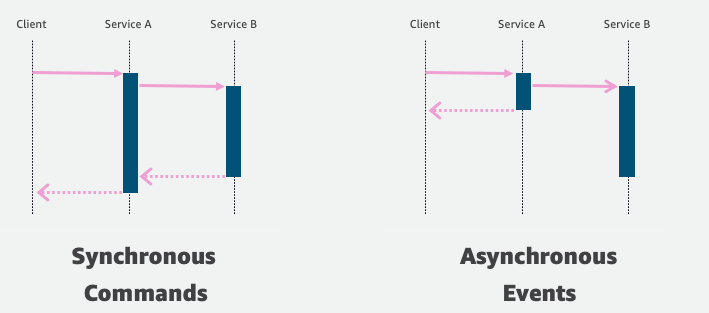AWS Compute Blog
Tag: serverless
Debugging AWS Step Functions executions with the new console experience
Today, AWS Step Functions introduces a new opt-in console experience that makes it easier to analyze, debug, and optimize Standard Workflows. Builders create Step Functions workflows to orchestrate multiple services into business-critical applications with minimal code. Customers wanted better ways to debug workflow executions and analyze the payload as it passes through each state. This […]
Benefits of migrating to event-driven architecture
Two common options when building applications are request-response and event-driven architecture. In request-response architecture, an application’s components communicate via API calls. The client sends a request and expects a response before performing the next task. In event-driven architecture, the client generates an event and can immediately move on to its next task. Different parts of […]
Orchestrating Amazon S3 Glacier Deep Archive object retrieval using AWS Step Functions
This blog was written by Monica Cortes Sack, Solutions Architect, Oskar Neumann, Partner Solutions Architect, and Dhiraj Mahapatro, Principal Specialist SA, Serverless. AWS Step Functions now support over 220 services and over 10,000 AWS API actions. This enables you to use the AWS SDK integration directly instead of writing an AWS Lambda function as a proxy. One […]
Build a custom Java runtime for AWS Lambda
This post is written by Christian Müller, Principal AWS Solutions Architect and Maximilian Schellhorn, AWS Solutions Architect When running applications on AWS Lambda, you have the option to use either one of the managed runtime versions that AWS provides or bring your own custom runtime. The following blog post provides a walkthrough of how you […]
Handling Lambda functions idempotency with AWS Lambda Powertools
Idempotency is a critical piece of serverless architectures and can be difficult to implement. If not done correctly, it can lead to inconsistent data and other issues. This post shows how you can use Lambda Powertools to make Lambda functions idempotent and ensure that critical transactions are handled only once.
Working with events and the Amazon EventBridge schema registry
Event-driven architecture, at its core, is driven by producers creating events and subscribers being made aware of those events and acting upon them. An event is a data representation of something that happened elsewhere in the application or from an outside producer. When building event-driven applications, it is critical to determine what events exist in […]
Orchestrating high performance computing with AWS Step Functions and AWS Batch
This blog post describes several challenges common to orchestrating HPC workloads. I describe how Step Functions with AWS Batch can solve many of these challenges. I provide a project that contains several sample patterns and show how to deploy and test this in your account.
Building an event-driven application with Amazon EventBridge
In event-driven architecture, services interact with each other through events. An event is something that happened in your application (for example, an item was put into a cart, a new order was placed). Events are JSON objects that tell you information about something that happened in your application. In event-driven architecture, each component of the […]
Introducing global endpoints for Amazon EventBridge
This blog shows how to create an EventBridge global endpoint to improve the availability and reliability of event ingestion of event-driven applications. This example shows how to use the PutEvents in the Python AWS SDK to publish events to a global endpoint.
Getting started with event-driven architecture
In modern application development, event-driven architecture is becoming more prominent because it can make building applications in the cloud easier. Event-driven architecture can allow you to decouple your services, which increases developer velocity, and can make it easier for you to debug applications. It also can help remove the bottleneck that occurs when features expand […]









